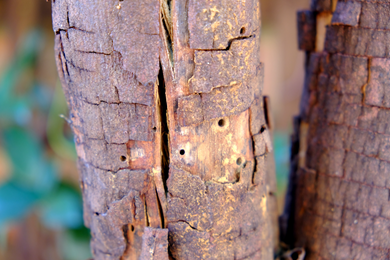
Polyphagous Shot-hole Borer (PSHB) is a significant pest affecting trees in the Perth metropolitan region. It causes serious structural damage by tunnelling into trees and introducing harmful fungi, leading to symptoms such as dieback, galleries (tunnels) and gumming (resin/sap exudation).
Infested trees may show signs like wilting branches, discoloration and gumming, which can ultimately result in limb failure and tree death. The borer attacks a wide range of plant species and poses a serious threat to urban forests and some agricultural industries.
To minimise the spread of PSHB, a Quarantine Area is in place for the entire Perth metropolitan region, covering 30 Local Governments. The Department of Primary Industries and Regional Development (DPIRD) is currently implementing a Transition to Management phase, which will provide the governance framework and tools to support long-term management from 1 January 2027.
Trees on local government-controlled land may pose various levels of risk. This can be due to a combination of factors including poor tree health and reduced structural integrity caused by pests and diseases. Under common law and relevant legislation, local
governments owe a duty of care to the community and persons entering and using the land under their control. Given the significant damage that PSHB can cause to both the host tree and by spreading to others, it is crucial for our sector that we aware of the impact PSHB can have on tree structural integrity, and have appropriate controls in place to identify, manage, and mitigate any risks to communities.
The LGIS Tree Risk Mitigation Guide (August 2023) provides general information to help local governments carry out their obligations, including prioritisation of areas prone to risks, and ensuring regular tree inspections to identify and pro-actively address risks. We also encourage local governments to follow the direction provided by the state on the specific management of PSHB.
For more information, please contact the LGIS risk services team.
